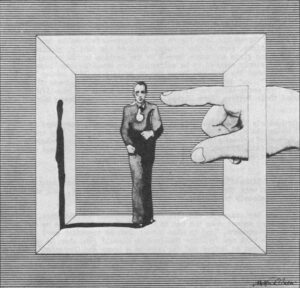Gail Sheehy
- 1973

Fellowship Title:
- Ages and Stages of Development in Men and Women
Fellowship Year:
- 1973

Down and Out on $70,000 a Year
It is possible that a working class man may be able to negotiate passage into mid-life with less crisis than a middle management executive, who may feel the storm earlier-and even die from it. Two boats lie at anchor in the same harbor of a Saturday afternoon. The skipper of the cabin cruiser, seventh vodka-and-tonic in hand, has spent the day embalming; his insecurities while he and his wife entertain the company officer whose job he covets. The solitary figure in the rough gray outboard, by contrast, is completely engrossed in anticipating a pull on his fishing line. Both men work for the same aircraft manufacturer and have passed 40. The skipper, an executive whose entire vision of himself is tied to the dream of being president, is using his recreational outlet purely as an extension of his occupational efforts. The fisherman, a shipping supervisor with few illusions about fulfilling himself through the job, is using his free tire to pursue a simpler passion as an end in itself. The skipper would be likely to

Where Have I Been?
Where Am I?
Where Am I Going?
Sixty million Americans listen to him every evening give an account of the world. They take from him their daily minimum requirement of composure. He is a star, a television newscaster, and a face better known than that of our Secretary of Defense. He can afford to tan it in Barbados on an income nearly ten times the peak of his father’s earnings — his father rarely had the wherewithal to get out of the Bronx. He can tint out the gray in his hair, tone up the muscles of middlescence on the most exquisitely devised exercise tables in Manhattan, take out the woman of his choice to dinner at “21,” and take back any traces of psychic discomfort to a Park Avenue psychiatrist. Today he has been asked to sit for a portrait. It will hang with the likenesses of two dozen other men and women in an exhibition of the most prominent members of his profession. The portrait is just another testimony by which the world is telling him, at the age of
